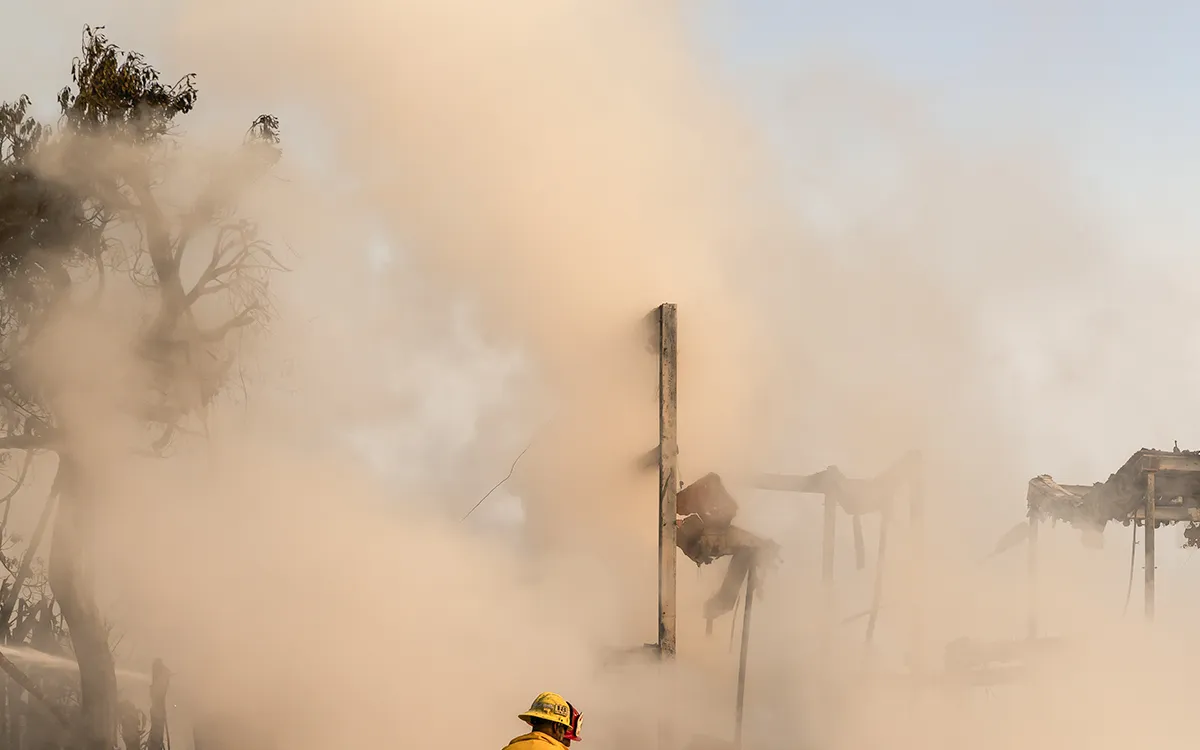
The hills of Mendocino County are now adorned with vibrant bursts of yellow, while smears of burnt orange stretch across the aqueduct near Bakersfield. A fresh splash of crimson juts out east of Chico, resembling a fresh wound. In a significant development, California’s firefighting agency has released its fourth and final round of color-coded hazard maps, highlighting the increasing wildfire risks across the state. This latest release underscores the alarming growth of the wildfire danger zone since the last local hazard maps were issued over a decade ago.
Notable areas, such as the hills above Berkeley and Oakland, saw a slight reduction in their hazard zones; however, areas classified as “high” or “very high” risk have surged by an astonishing 168% since 2011. The new maps reveal that the size of these hazardous orange and red patches now covers a staggering 3,626 square miles—an area nearly double the size of Delaware. This expansion affects approximately 3.7 million people in California, according to a CalMatters analysis that combined the hazard maps with population estimates from researchers at the University of California.
This means that about 1-in-10 Californians are now subject to a range of regulations concerning building codes, defensible space, and real estate disclosure requirements. These changes could significantly impact how residents live, how communities are planned, and how housing markets operate, particularly in the state’s most fire-prone neighborhoods. Affected homeowners include many in the burn scar of the Eaton Fire, where the hazard zones have expanded roughly half a mile further into recently scorched areas like Altadena.
For homeowners who find their properties within these newly expanded zones, compliance with heightened fire-resistant building codes will be mandatory when rebuilding. California’s Department of Forestry and Fire Protection (Cal Fire) has rolled out these maps in phases over the past six weeks, starting from the northernmost regions of the state and concluding with counties like Los Angeles, Orange, and San Diego.
These maps only cover cities and towns where local fire departments manage wildfire risks, while areas under Cal Fire's jurisdiction were remapped in late 2022, also reflecting a rise in hazard zones. It is important to note that federal lands, which make up approximately 45% of all land in California, are not included in either set of maps.
Why have these danger zones expanded so dramatically? According to State Fire Marshal Daniel Berlant, there are three primary reasons: climate change, technological advancements, and legal mandates. Climate change has made vegetation drier and fire weather more severe, increasing the likelihood of wildfires. Technological advancements have led to more accurate modeling methods, allowing Cal Fire to assess hazard levels with greater precision. This includes hyperlocal simulations of weather patterns and ember size estimations based on local vegetation.
Moreover, legal changes mandated by state legislation in 2021 required the development of new maps that categorize hazard zones in both local and state jurisdictions. Berlant emphasizes that these hazard assessments differ from the risk calculations performed by insurance companies, which take into account a broader range of factors.
The release of these maps is expected to influence insurance rates and home prices, adding a layer of concern for homeowners. In 2022, the state of Oregon faced backlash after releasing its own hazard maps, as many homeowners feared that elevated hazard designations would negatively impact property values and invite insurance companies to raise rates. Although California has not yet seen a similar uproar, some local officials have expressed frustration over the state’s mapping process.
Local governments are required to hold public comment periods, but they must ultimately approve the maps without removing any hazard areas. Additionally, property sellers are now required to disclose hazard levels to potential buyers, which may also affect the cost of living in California's fire-prone regions. A 2023 study revealed that homes within these hazard zones sold for an average of 4.3% less than comparable homes outside the zones.
Despite these concerns, many real estate agents in high-risk areas remain unfazed by the new maps. They argue that the presence of elevated fire hazard zones has long been a reality for homeowners, and the new maps merely formalize existing knowledge.
Moving forward, the focus will need to shift towards understanding and predicting wildfire behavior more accurately. Current hazard maps primarily predict the likelihood of wildfires based on topography, weather, and vegetation, rather than the potential for catastrophic events where one fire spreads to another home. Predicting such disasters would require more detailed data, including the types of materials in homes and the proximity of structures to one another.
As California continues to confront the challenges posed by increasing wildfire risks, the importance of these hazard maps cannot be overstated. They serve as crucial tools for policymakers, homeowners, and communities striving to mitigate the impacts of wildfires and enhance resilience against this growing threat.